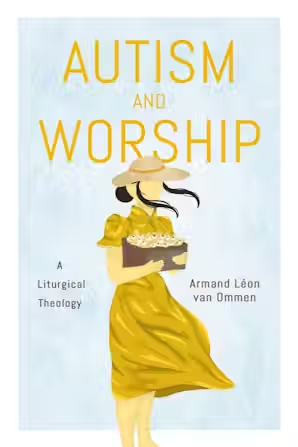
Book Review – Autism and Worship
This is an academic book about how autism interacts with liturgy. The author is a professional theologian of liturgy, who is also a co-director of the Centre for Autism and Theology at the University of Aberdeen. He isn’t himself autistic – that’s not a problem; it’s good to get an informed outsider’s perspective too.
What was good about the book?
He does a good overview of the current literature about autism and theology in chapter 1, and an interesting history of how autism is conceived in chapter 2. The insights on how the Chapel of Christ Our Hope in Singapore do church in an explicitly autism-friendly way were also really helpful. I love being able to look at and learn from things that other people have worked hard to create.
And yes, I think for those who want to do church in an autism-friendly way, it’s pretty helpful for giving some ideas. I also found it really helpful for seeing where current thinking is at, so that I can help to build on it in the future.
He has a heart for autistic inclusion in worship, and that came across very clearly.
What could have been better about the book?
It’s very clearly an academic theology book rather than being aimed at normal ministers. And as such, it is priced like an academic theology book (£28 for the Kindle version – why? how?) and is written like an academic theology book, including lots of jargon, some of which has suffered in translation.
As such, I found that I often needed to read things several times to understand them, and didn’t always get there. I’ve got a good theology degree, but I’ve spent most of the last 20 years leading churches rather than in academia, so my academic-ese isn’t always as fluent as it used to be.
Autistic tangent: A classic example of jargon suffering in translation is Martin Buber’s classic and influential work Ich und Du. It’s about the importance of Christianity being a personal relationship with God. “Du” is the German familiar single word for “you”; German also has a plural-you “ihr” and a formal-you “Sie”. The obvious translation of “Ich und Du” into English is “Me and You”. But the academic theologian translators wanted to distinguish between “du”, “ihr” and “Sie”, so went for “I and Thou” – dumb move. In the 1600s, “thou” was probably acceptable for single personal; but in the 1900s and 2000s, it’s archaic formal.
As a result “thou” has a jargon meaning in theology, meaning an intimate and personal connection with God or with someone else, when in everyday speech it means the opposite – trying to be overly formal. I only actually understood what it meant in theology when I realised that “thou” was meant to be the English equivalent of the German “du”. But authors who use that jargon almost never explain.
Van Ommen just uses it without any of the context. And there are quite a few other examples of that sort of thing too.
There’s also some stuff which I really didn’t understand, and I’m not sure whether he did either. For example, I’m fairly confident that his discussion of quartiles (p.82) doesn’t use the word in the same sense that modern statistics uses it, and even if it did, it doesn’t back up the valid point he is trying to make about normalcy.
I also think there’s a lot more that could have been said about how the concept of normalcy functions to exclude neurodivergent people from the liturgy in settings other than traditional “liturgical” ones. See here, for some examples.
Summary
A good book, useful at framing some of the academic discipline, but a much harder read than it needed to be. He’s obviously talked to autistic people, including non-verbal ones, about their experience, and that is incredibly valuable. However, he might well have benefitted even more from doing so in a wider variety of settings.
John Allister
John Allister is the vicar of St Jude’s Church in Nottingham, England.
He is autistic, and has degrees in Theology and Experimental & Theoretical Physics.

